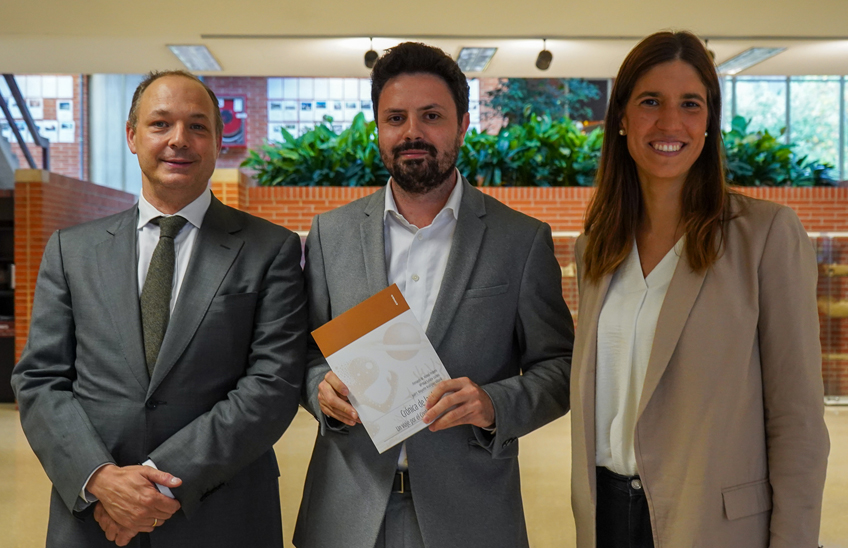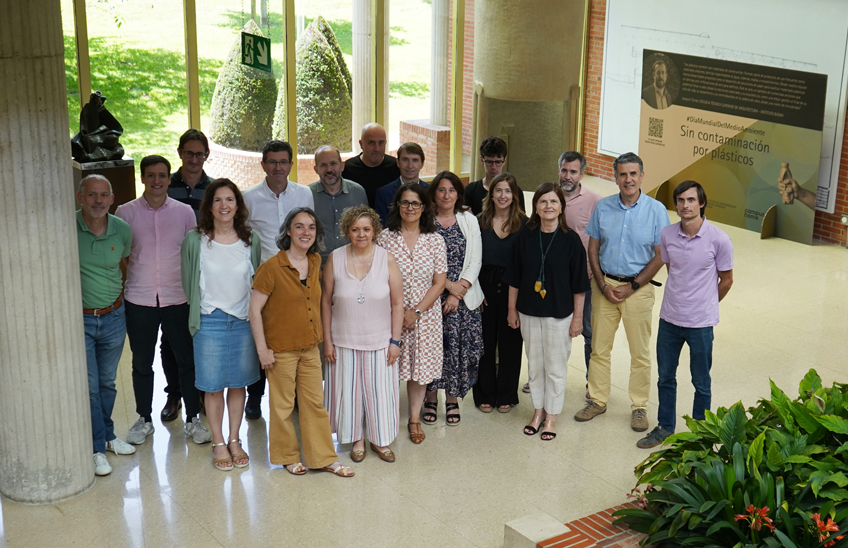Students and graduates of design of the University participate in the Madrid Design Festival
His works are exhibited at the Italian Institute of Culture and at the Institución Libre de teaching in Madrid.
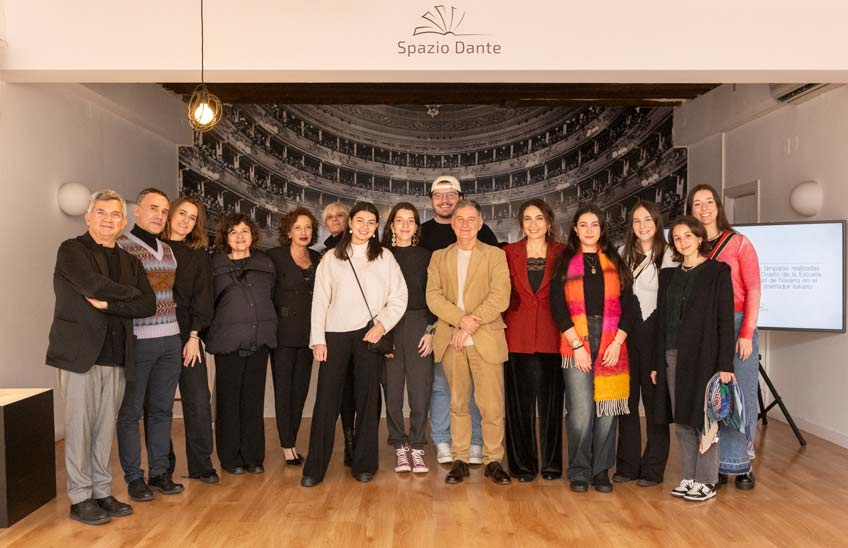
FotoCedida<br>/Miembros del Instituto Italiano de Cultura de Madrid junto a Andrea Anastasio, profesores y estudiantes de la Escuela de Arquitectura de la Universidad de Navarra en la inauguración de la exposición ‘Light Thread’.
29 | 02 | 2024
The University of Navarra will once again be present at the international Madrid Design Festival (MDF), which celebrates its VII edition from February 9 to March 31 and turns the city into the capital of design.
This edition features 257 activities, 89 institutions and brands, 53 exhibitions and installations, 49 exhibitions and installations and 47 OFF spaces. Two of the exhibitions feature works by students and graduates of design from the University's School of Architecture.
One of the exhibitions can be seen at the Italian Institute of Culture in Madrid, where Light Thread is on display, 18 lamps made by 3rd year students of the Degree in design of the accredited specialization in Product during this course in a workshop led by Italian designer Andrea Anastasio. The lamps complement the artist's first exhibition in Spain, Mimetica. Ceramics: reflections and refractions, organized by the Institute partnership with Ceramica Gatti 1928, Foscarini and the Museum of Oriental Art of Turin (MAO), under the auspices of the Italian Embassy in Madrid. The two exhibitions can be visited until March 2.
Amaia Zuazua, professor of Degree at design of the School of Architecture, explains what the intensive workshop led by Andrea Anastasio consisted of: "It was conceived as a transformative activity, with the purpose to foster students' understanding of the anthropological implications of design. Participants were encouraged to explore the interrelationship between material, form, craft, industrial fabrication, cultural communities and the multifaceted definition of function. Students, in response, submitted designs that reflected influences from their own cultures and roots, bringing tangible narratives to life through the ingenious use of minimal resources, such as a wire and a light bulb."
For example, one of the lamps on display, Elkarbizitza (which means "coexistence" in Basque), made by student Cristina Bald, from San Sebastian, is a tribute to the Bidasoa region and the Basque coast. The eight wooden circles represent the eight villages that make up the region: Santesteban, Sumbilla, Lesaka, Etxalar, Bera, Irun, Hendaye and Hondarribi. "Just as the Bidasoa River flows through these villages, the cable flows through the wooden circles, creating a visual image and symbolic connection between them. The lamp reflects the interdependence of the towns and how their collective identity is reinforced by their relationship with the river," explains the student at design.
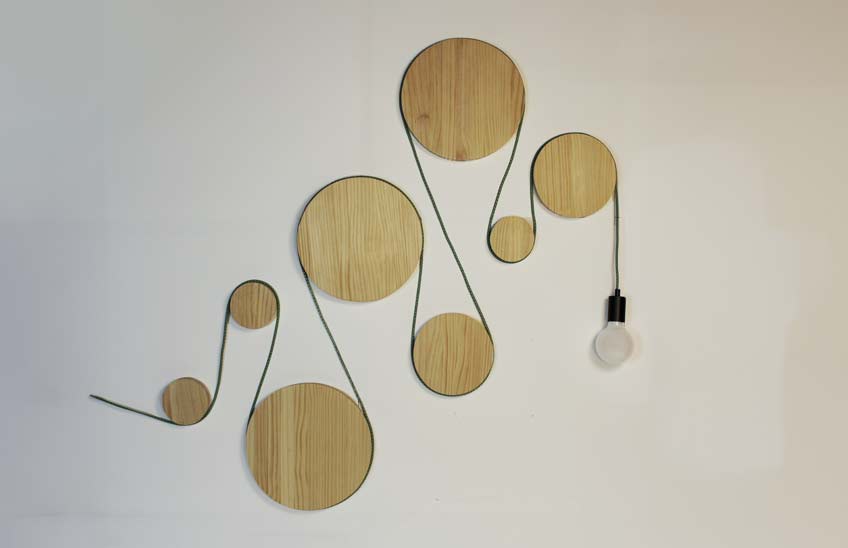
Elkarbizitza' (which means "coexistence" in Basque), elaborated by Cristina Bald, 3rd year student of design at the University of Navarra. Photo: on loan.
On the other hand, student Andrew Cavanagh has been inspired by his ancestors to design a lamp that symbolizes the struggle and hardships faced by his family, who had to adapt to American culture, sacrificing their language and traditions for the sake of survival. "The Beacon Beacon represents the search for the American dream, symbolized by the light, while stifling his connection to his roots," explains the student. Despite this loss, the author emphasizes the importance of "recognizing and honoring heritage, even in the absence of tangible connections, as a means of preserving family identity and cultural bequest ."

'Beacon' lamp, made by design student Andrew Cavanagh. Photo: on loan.
Designing for society
On the other hand, the University of Navarra is exhibiting Diseñamos at the Institución Libre de teaching (ILE) in Madrid as part of the open program Fiesta Design. This traveling exhibition of Degree at design, as explained in its description, contains works by students and graduates of the three mentions: "design Product, Fashion or Services; talent, creativity and innovation in the service of society".
For example, this is demonstrated through works such as Asteriskby graduate Belén García, who designed a game set to offer an adaptive treatment to the needs of people with dementia, working cognitive stimulation and fine psychomotor skills through strategy and movement of the pieces on a board composed of configurable modules.
There are even projects that allow you to listen to a painting, such as the one developed by graduate Elena Brotons, A_Tempoan interdisciplinary game that relates the world of visual art and sound art, with the aim of being able to listen to the paintings by translating the shapes of the paintings into sounds.
The exhibition also shows projects of the accredited specialization in Fashion, such as Mano a manoby graduate Isabel Armendáriz, a fashion collection whose elaboration is result from the transformation of antique linen and hemp textiles and the creation of fabrics from these same fibers on a rigid comb loom guide .
Diseñamos has also participated in other relevant events at design such as the Bilbao Bizkaia Design Week.
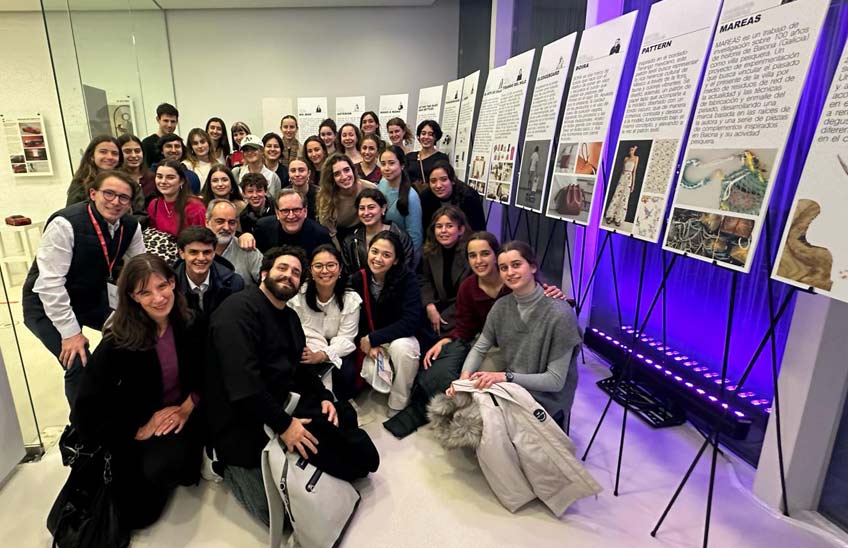
Students, professors and graduates of design of the University of Navarra at the opening of the exhibition 'Diseñamos' at the Institución Libre de teaching (ILE) in Madrid. Photo: on loan.

